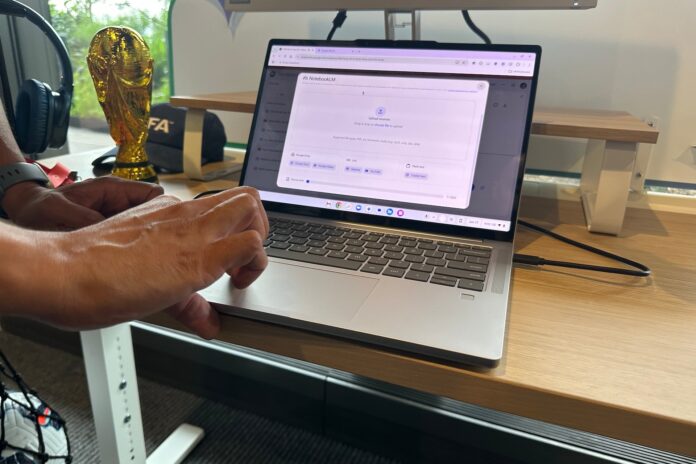After diving into the luxurious Lenovo Chromebook Plus 14, I have ChromeOS on my mind. Apparently, so does Google. In an interview with TechRadar, Android “daddy” Sameer Samat dropped a small bombshell about the future of ChromeOS, though without providing any of the raw details. He said Google plans to combine ChromeOS and Android “into a single platform.” This project seems to be in the early phase of development. Samat said he was analyzing what apps people are using on their PCs or Macs, which he would want to emulate in a revised Android laptop experience.
Google is known for killing products, but is this a form of death for ChromeOS or a transformation? It will depend on if Google actually focuses on making a platform built for the regular laptop user or if it merely paints ChromeOS over with the bold yet all-too-tacky Material 3 Expressive aesthetic. At its recent I/O dev conference, Google said the upcoming Android 16 is supposed to support tablet-sized displays better than before. That’s a good thing, since software on Android tablets has been languishing for years.
Google’s plans to combine all its disparate ecosystems into one put it in stark contrast with Apple. Though most of the attention has lingered on the Liquid Glass redesign, the iPad maker recently revealed its plans for iPadOS 26, a redesign that will finally enable multiple app windows on a screen at once. While the OS update will make the iPad more Mac-like, the developer beta shows how the experience is tailored for tablets. If Google actually plans to make a real change to ChromeOS, it needs to think big. It needs to create an experience tailored to the lower-powered, lower-cost laptop design. And no, that update can’t just be more AI shoved into every nook and cranny.
Chromebooks receive regular yearly feature updates that feel more like ChromeOS is being saddled with hand-me-downs from Google’s other flagship products. There are certain features, like Google Tasks integration on the app shelf and the GIF recorder made for sending a quick meme to friends, that are all fine and dandy. But little about the experience feels truly bespoke. Outside a bevy of streaming apps and a few games on the Play Store that play nice with laptop resolutions, users are expected to jump into the Chrome browser for all their important tasks. Want to write? Use Google Docs. Want to edit photos? Jump into the constrained cloud-based version of Photoshop.
This lack of a larger ChromeOS developer community makes the Chromebook feel too much like a one-trick pony. You can do a lot with it, though only so far as you’re willing to sign up for half a dozen cloud services for running code, editing photos or videos, or playing games. These are meant to be cheap devices that anybody can get into, but more so they’re a vehicle for Google to push its various subscription services. The big one today is Google One, a $20-a-month service that grants you 2TB of cloud storage—which I will admit is enticing by itself—but the main reason it exists is it allows access to Google’s most advanced Gemini AI models. Google currently tries to entice users with the promise of six months of Google One for no extra cost when you buy a new Chromebook. Of course, you’ll have to cancel the subscription yourself once the bill becomes due.
Over the last few years, Gemini has come to roost on the company’s cheapo laptop line, and now it’s perched on the former Caps Lock key as the “Quick Access” button. There are a few features like “Help me read” to summarize text or “Help me write” to jot down an email when you can’t be bothered to format a few bare sentences. There are some other AI features Google likes to promote, like Google Lens image searches of your photos in the Gallery app. For the Lenovo Chromebook Plus 14, Google added its AI recording and note-taking app NotebookLM right to the app shelf as well.
None of this provides what I would consider a fleshed-out experience. Instead, Google needs to focus on making Android apps truly compatible with Chromebook. While I can get Disney+ or GeForce Now native apps right from the ChromeOS desktop screen, there are far too many apps restricted to operating in tablet mode. Chromebooks are still a distinct form of laptop—one whose main selling point is affordability—but they could be more. It demands a bespoke experience that’s more than just a gateway to Google services.
